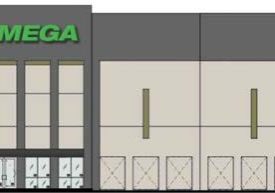Modern Emergency Communication for Residential Elevators
Sep 1, 2025

Moving beyond the landline
submitted by MAD Elevator
In today’s smart homes, landline phones are becoming a rarity. For many homeowners building or upgrading their properties, including those adding residential elevators, the absence of a Plain Old Telephone System (POTS) line is no longer a challenge — it’s a design decision. This shift is reshaping how we think about emergency communication in private lifts.
During a recent conversation with a residential elevator contractor, one recurring concern stood out: The majority of new-build homes today — often more than 80%, according to telecommunications trends — are no longer equipped with traditional landlines. Instead, most are pre-wired with CAT5 or fiber optic cabling, reflecting the shift toward internet-based infrastructure and mobile-first communication.
This reality puts residential elevator manufacturers and installers in a new position: How do we maintain codecompliant, fail-safe communication systems without relying on POTS lines?
Enter Cellular Modems and Modular Emergency Solutions
As voice communication regulations become more stringent — requiring hands-free, 24/7 operation and backup power — cellular-based emergency communication systems are stepping in as a reliable alternative. These are not basic cell phones slapped onto an elevator panel. They are purpose-built, codealigned modules with external transceivers, battery backups and smart diagnostics designed for the elevator environment.
At MAD, we’ve seen success adapting our commercial-grade ECS (Emergency Communication System) hardware for residential applications. A car-top-mounted cellular modem with a 4-h battery backup, paired with an external antenna to boost basement reception, is a practical and scalable solution for homeowners who want peace of mind without the hassle of installing a dedicated landline.
Why the Shift Matters
There are several reasons why the shift matters, including:
- Reliability Through Redundancy: A dedicated cellular modem with backup power can often outlast traditional systems during outages.
- Installation Flexibility: These systems work with the existing infrastructure of modern homes with no need to request costly POTS installations. submitted by MAD Elevator
- Preparedness for Future Codes: As jurisdictions adapt to changing technologies, solutions that embrace cellular and IP-based communication are future-proof.
Code Compliance Without Compromise
ASME and other local codes still demand clear standards. Emergency phones must be hands-free, accessible and functional during outages. Modern solutions can meet all these requirements without relying on 20th-century technology.
A car-top-mounted cellular modem with a 4-h battery backup, paired with an external antenna to boost basement reception, is a practical and scalable solution for homeowners who want peace of mind without the hassle of installing a dedicated landline.
That said, the transition isn’t without its challenges. Ensuring strong signal strength, coordinating with network providers and managing power backup systems requires thoughtful planning and support. But when executed correctly, the result is a safer, smarter and more efficient emergency communication experience — one that aligns with how homes and families live today.
Looking Ahead
Residential elevators are no longer luxury anomalies; they’re essential accessibility tools. As their presence in modern homes grows, so too must our approach to their safety systems.
In the conversation about emergency communication, it’s time to ask: Is the best solution still a landline, or is it time to embrace systems designed for how we live now — mobile, connected and future-focused?

Get more of Elevator World. Sign up for our free e-newsletter.









